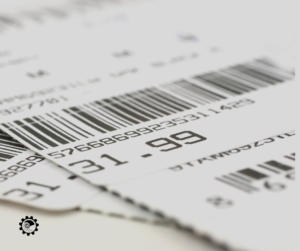For decades, the retail landscape has relied on paper shelf labels to display product information and pricing. While seemingly simple, this traditional method has limitations. Manually updating prices can be time-consuming and error-prone, and ensuring consistent information across a large store can be a challenge. Enter electronic shelf labels (ESLs), a technological innovation transforming the way retailers manage product information and enhance the customer experience.

What are Electronic Shelf Labels?
ESL systems replace paper labels with digital displays. These displays, typically utilizing e-ink technology, showcase product details like name, price, and even promotional information. However, unlike static paper labels, ESLs offer a dynamic advantage. They connect to a central database, allowing for real-time price updates, automatic inventory management, and even targeted advertising at the shelf level.
Revolutionizing Retail with ESLs
ESL technology offers a multitude of benefits for both retailers and consumers:
- Enhanced Accuracy and Efficiency: Manual price changes are a thing of the past. With ESLs, retailers can update prices across the entire store instantly, eliminating the risk of errors and discrepancies. This translates to increased operational efficiency and reduced labor costs.
- Dynamic Pricing: ESL systems allow retailers to implement dynamic pricing strategies. Prices can be adjusted based on factors like time of day, competitor pricing, or even product popularity. This enables retailers to optimize profit margins and respond to market fluctuations in real-time.
- Improved Customer Experience: Clear, up-to-date pricing information at the shelf eliminates confusion for customers. Additionally, some ESL systems can display additional product information, such as nutritional details or promotions, empowering customers to make informed purchasing decisions.
- Inventory Management: ESL systems can be integrated with inventory management software, providing real-time insights into product stock levels. This allows retailers to optimize stock replenishment and minimize out-of-stock situations.
- Reduced Paper Waste: Paper labels often end up discarded after price changes. ESLs eliminate this environmental impact, contributing to a more sustainable retail operation.
Beyond the Basics: Advanced Applications of ESLs
Looking ahead, ESL technology is poised to evolve further:
- Integration with Loyalty Programs: ESL displays could personalize product information based on a customer’s loyalty program membership, highlighting special promotions or reward points.
- Interactive Features: Imagine tapping an ESL to access product reviews, detailed specifications, or even recipes. This interactive element could elevate the shopping experience and encourage customer engagement.
Considerations and Challenges
While ESLs offer significant advantages, some challenges need to be addressed:
- Initial Investment Costs: Implementing an ESL system requires an initial investment in hardware and software. However, the long-term cost savings in labor and improved operational efficiency can outweigh the upfront investment.
- Security Concerns: As with any digital system, security is paramount. Robust measures must be in place to prevent unauthorized access and ensure the integrity of displayed information.
The Future of Retail Shelves
The future of retail shelves is undoubtedly digital. Electronic shelf labels offer a compelling solution for retailers, streamlining operations, enhancing customer experience, and paving the way for a more data-driven and dynamic retail environment. As technology continues to evolve and costs become more competitive, we can expect ESL adoption to accelerate, transforming the way we navigate the aisles and interact with products in the years to come.
In conclusion, electronic shelf labels are more than just a digital upgrade to the paper tags of the past. They represent a paradigm shift in retail operations, offering a powerful combination of efficiency, flexibility, and customer engagement. As ESL technology matures, and costs become more favorable, we can expect them to become a ubiquitous fixture in stores across the globe. This shift promises a more dynamic and data-driven retail landscape, where both retailers and consumers reap the benefits of a seamless and information-rich shopping experience. The future of retail shelves is undoubtedly bright, illuminated by the power of electronic shelf labels.



